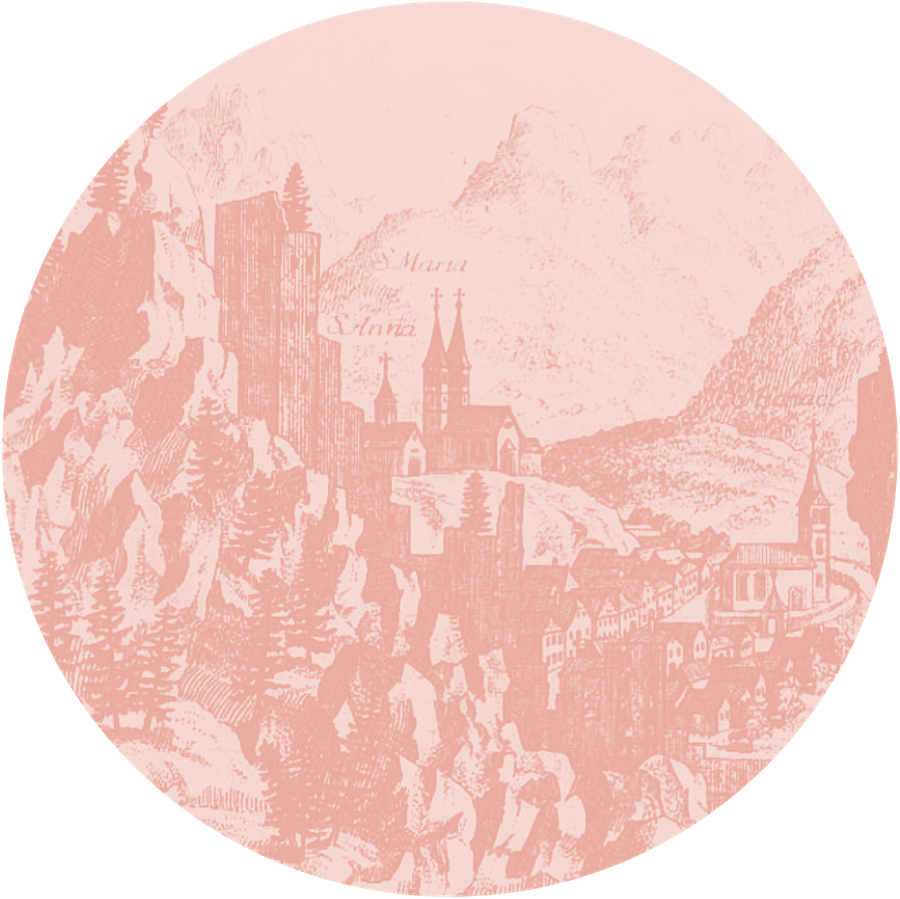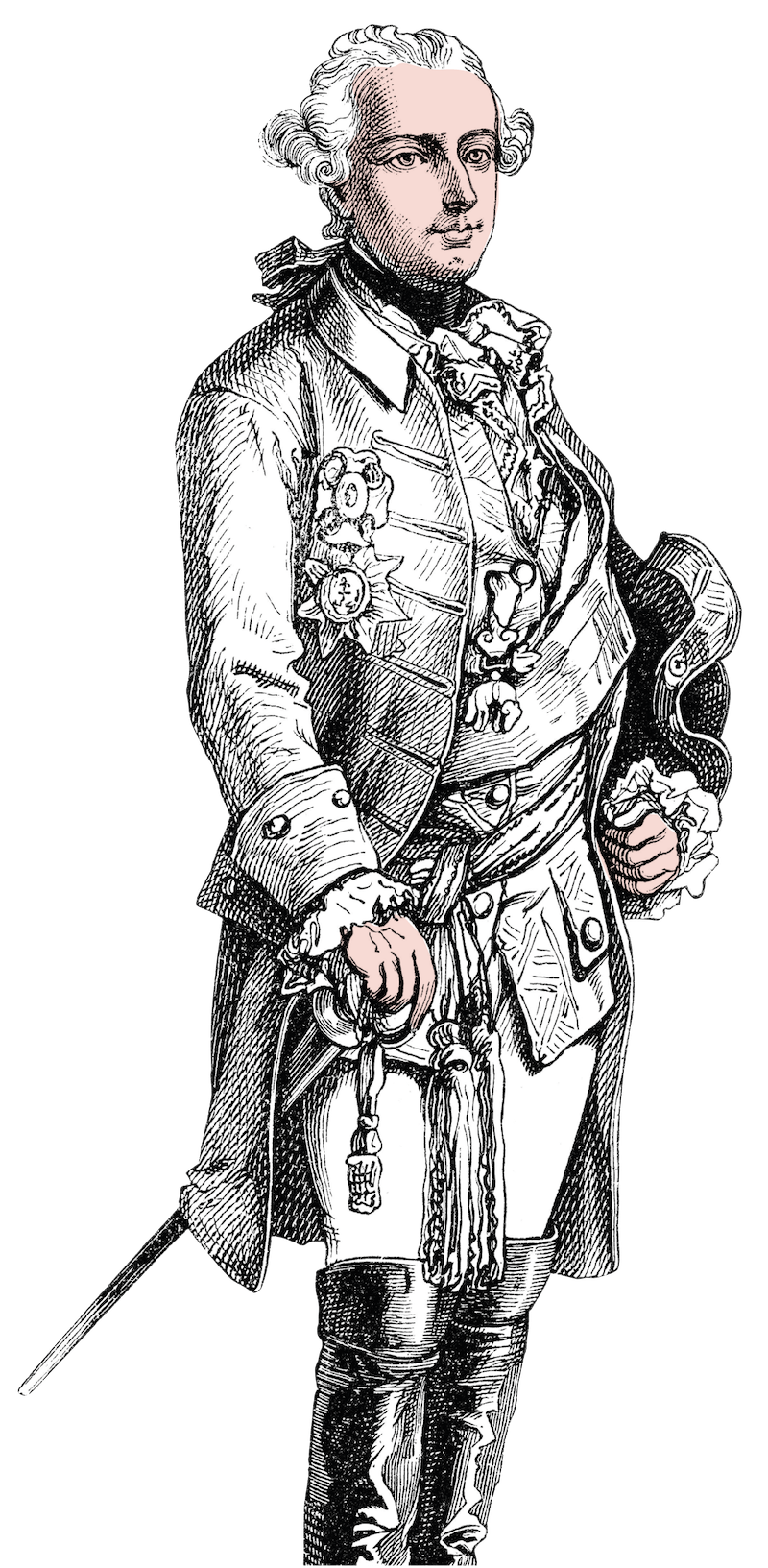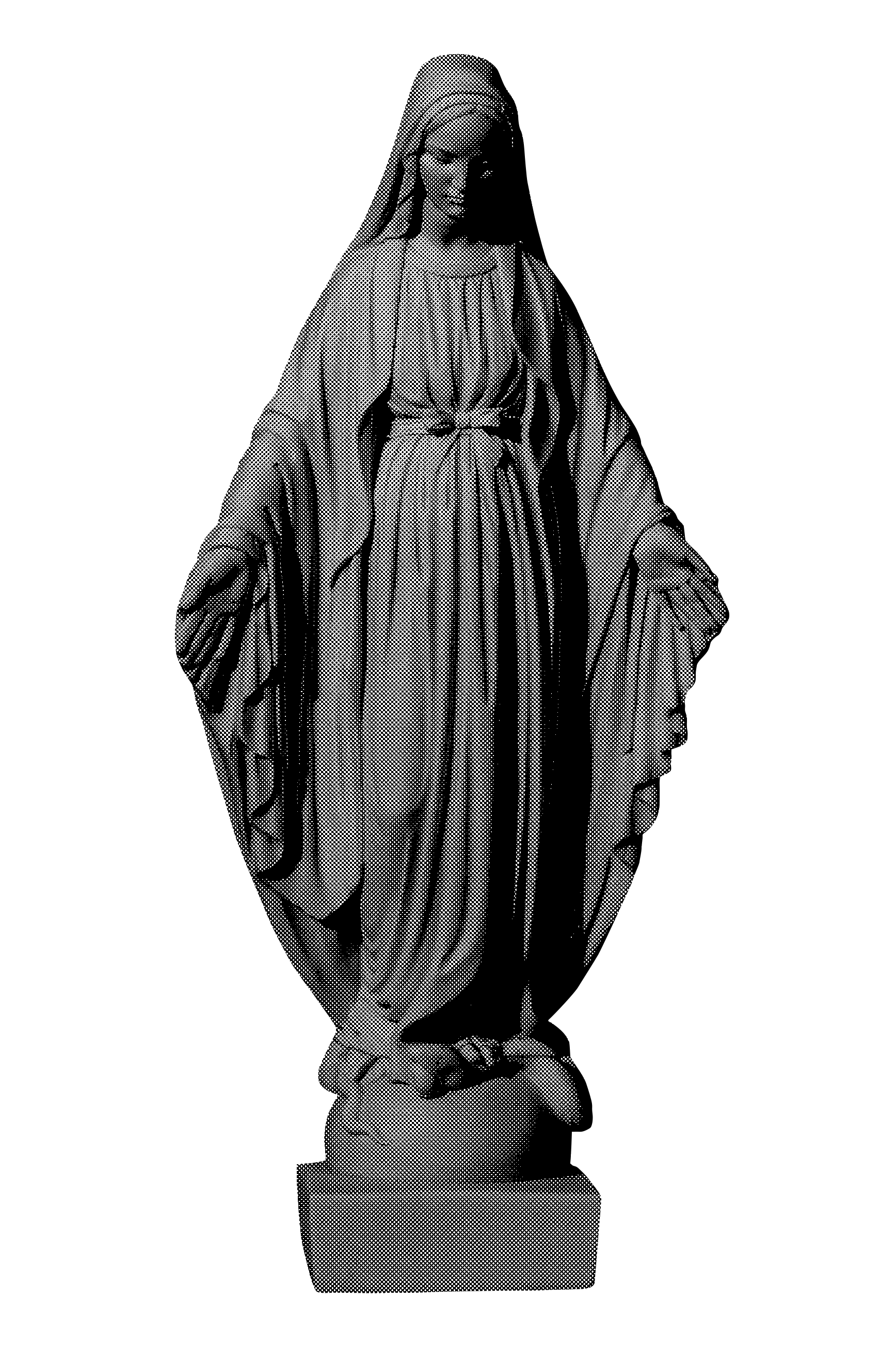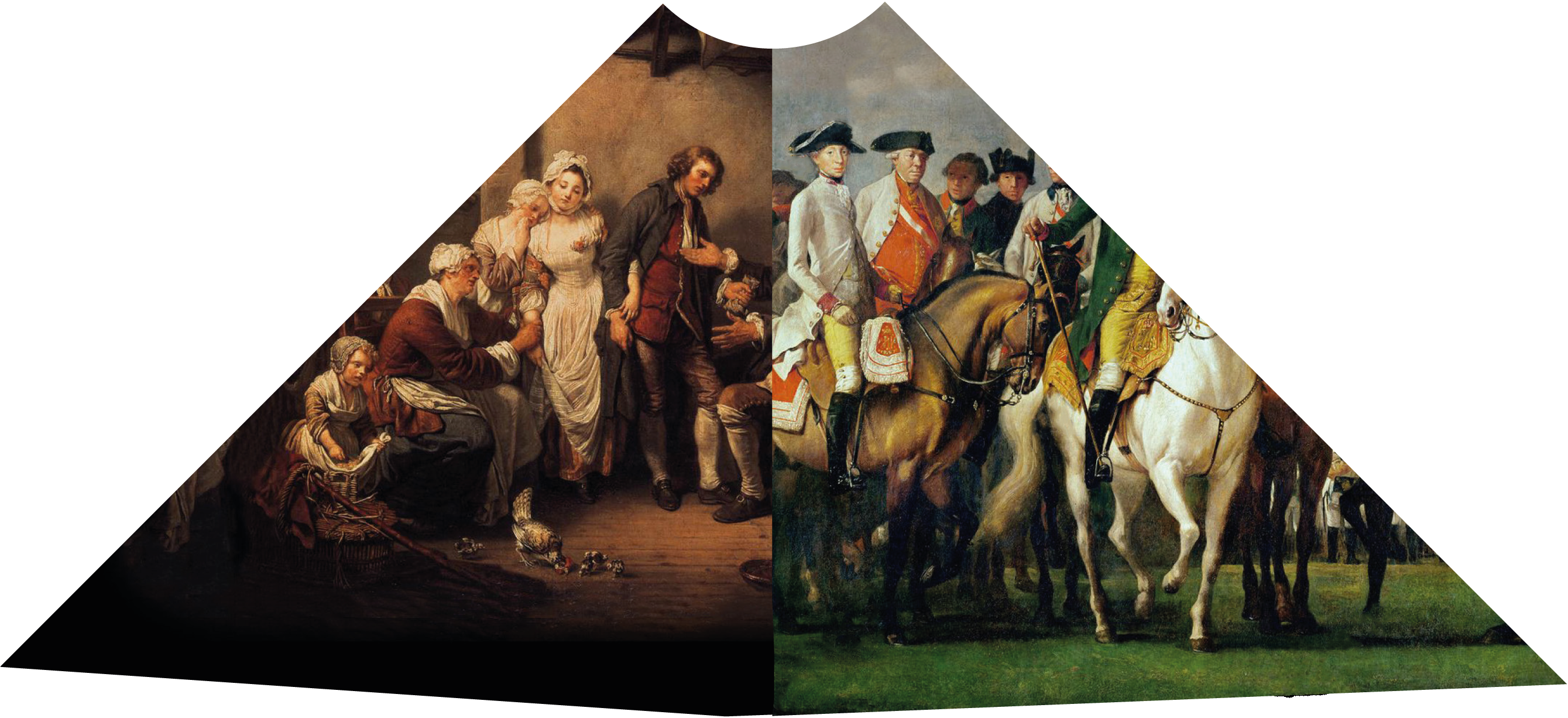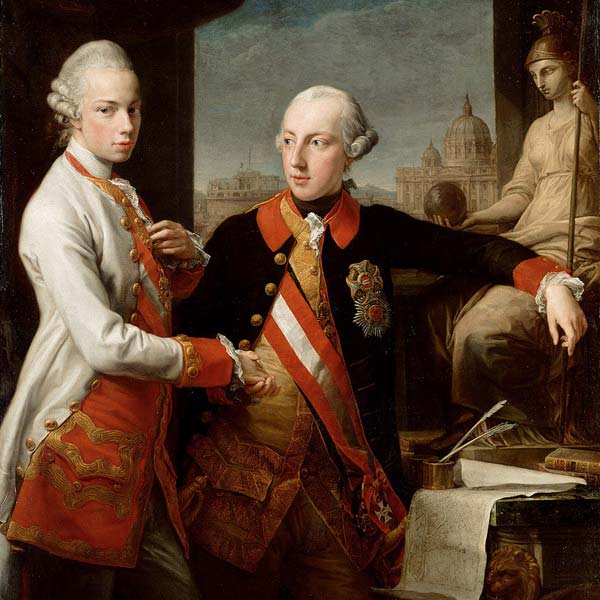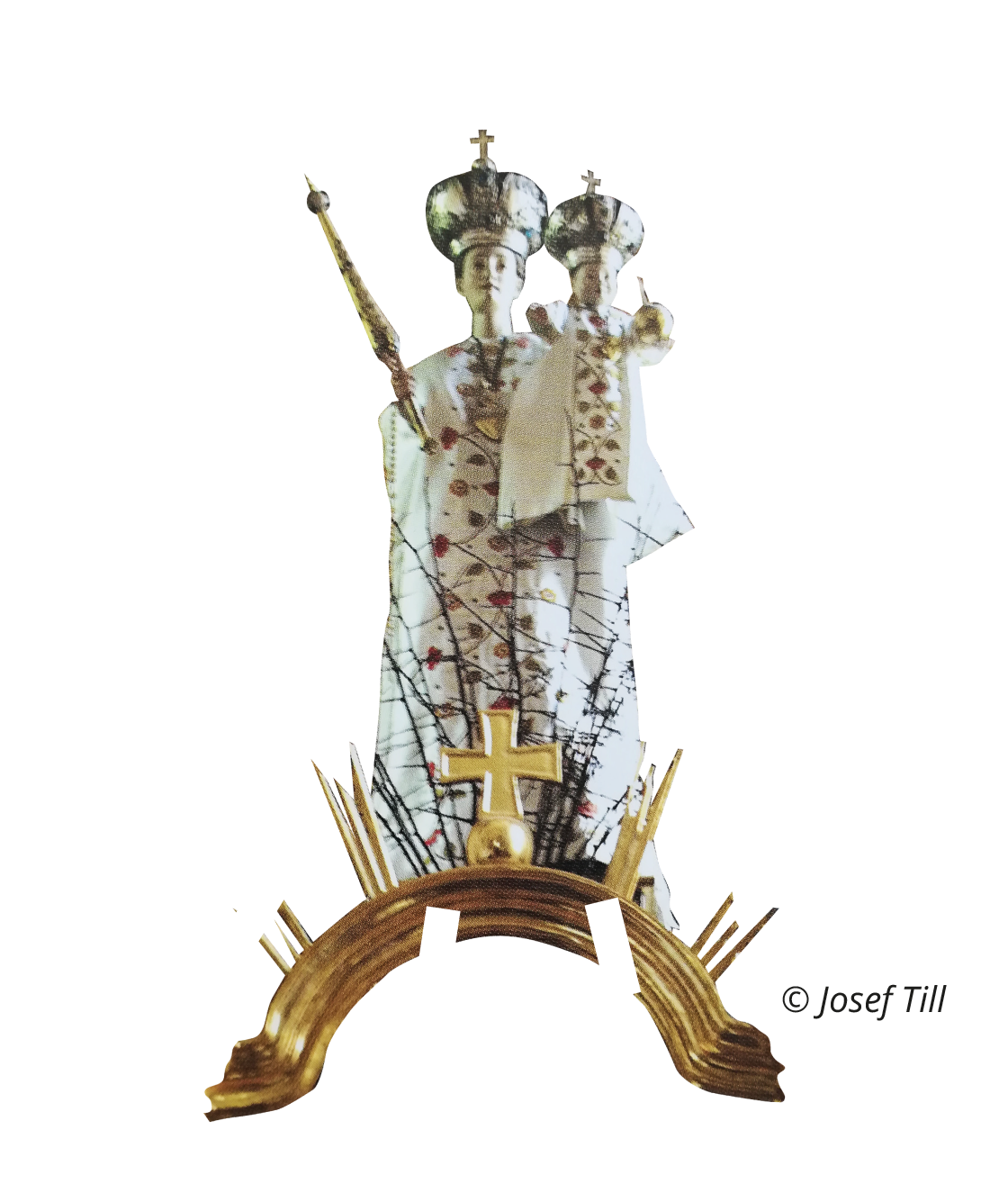In 1780, Emperor Joseph II became the sole ruler of the Habsburg monarchy, and with his rule, the Enlightenment finally seemed to arrive. But this was not seen as promising by everyone, and for some it posed a threat. Joseph's mother, Maria Theresa, had already begun a comprehensive policy of reform that extended to the church and religious life in general. Joseph II increased the pace of reform with spectacular measures designed around the ideals of the Enlightenment: the abolition of serfdom and the death penalty, as well as granting religious tolerance and the end of censorship. The measures also included closing down hundreds of monasteries and fundamental changes in the structure of the church. Of particular interest was the abolition of baroque forms of piety, such as processions, the Wetterläuten (church bells that were rung to forestall bad weather), and the prohibition on dressing the statues of Virgin Mary in festive robes.
Church reforms in
the Carinthian Alps
Joseph II.
enlightens!
The Undressed
Maria in Kappel
But these reforms, which touched on the everyday life and rituals of ordinary people, sparked conflicts and sometimes even open resistance. The mixed-language village of Kappel (today Bad Eisenkappel) in the mountainous southeast of Carinthia is a good example. In 1788, the local authorities wanted to undress the statue of the Virgin Mary in the Maria Dorn pilgrimage church and subsequently close the church, a move the inhabitants of Kappel resolutely resisted. The authorities were surprised by their defiance and did not quite know how to deal with the situation; they briefly even considered the use of military force.
What threatens us?
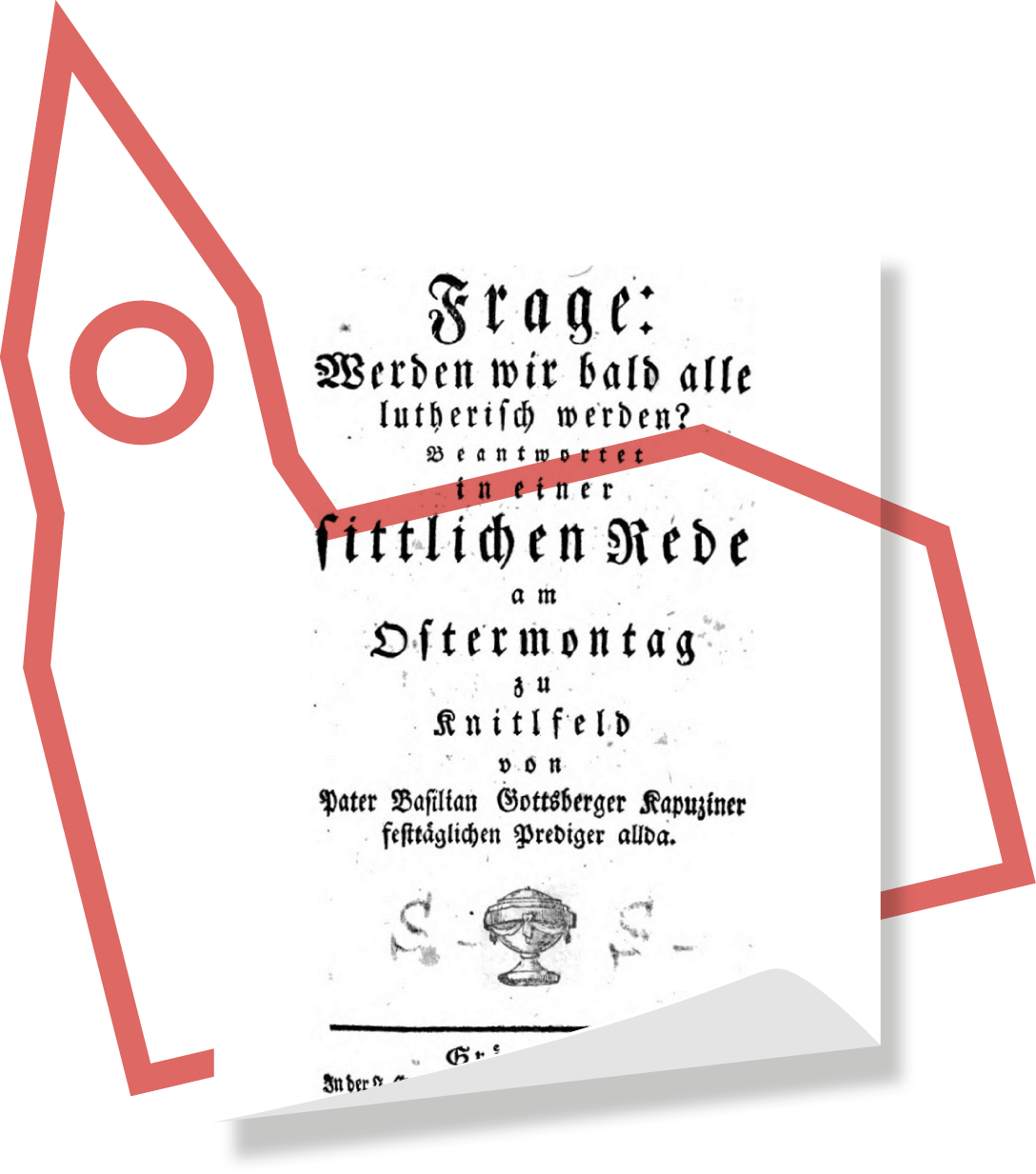
The residents of Kappel perceived a concrete threat when, at the behest of the authorities, their miraculous statue of the Virgin Mary was to be undressed and the pilgrimage church of Mary Dorn closed. The residents perceived such measures in a broader context as a general threat to their way of life. The Enlightenment reforms threatened the ‘true’ religion: their religion. This was no small matter in a society that was strongly oriented toward the afterlife; a loss of the true faith endangered nothing less than one’s eternal salvation. Surprisingly, however, the residents of Kappel defended the emperor. In their eyes, the head of their established political and social order could not be responsible for the reforms, because it would have called into question the fundamental purpose of everything they knew to be true. Therefore, the citizens of Kappel were convinced that “something like this [meaning the reform measures] could never be the direct order of the emperor.” Instead, they held local and regional public officials, such as the parish priest and, above all, the district governor in Klagenfurt responsible. The townsfolk saw them as frauds and the actual initiators of the threat.
Who are we?
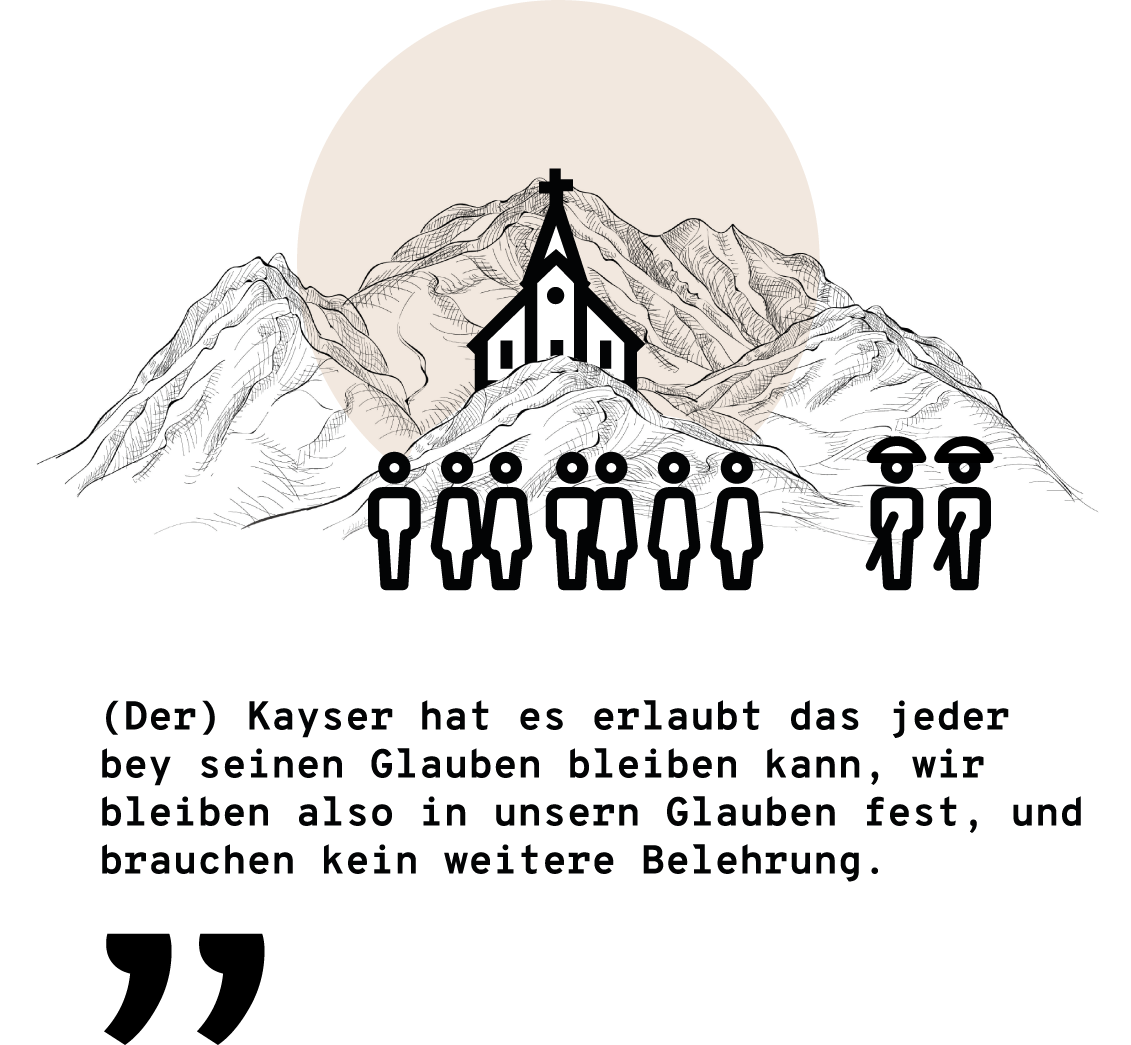
The residents of Kappel saw themselves as good Christians, i.e. Catholics, who resolutely rejected changes to their daily religious life. They viewed the ideal of tolerance for non-Catholics in such a way that they believed they also had the right to freely choose their religious faith, which was Catholicism. In addition to this denominational identity, the citizens of Kappel stressed their togetherness as a community. They did not want to be divided and emphasized that either the entire community would talk to the officials or no one at all would. Thus, the commitment to preserve the clothed statue and the church also strengthened local identity as a whole. This was especially true of the women who were strong defenders of their statue, who became an integral force within the community as well as spokespeople to outsiders. On the other hand, a strengthening of this sense of community meant a questioning of differences in social standing, which the distraught parish priest reported to the authorities.
What do we need?
Of paramount importance to the citizens was their statue of Mary, which provided them with heavenly support. In a society in which religious life was shaped by the principle of exchange – something is given (worship) and something received in return (heavenly support) – the statue was the most important resource. To maintain this important resource, the townsfolk prayed often and held processions. It was also essential for them to mobilize as many residents as possible for the resistance; unity as a community was vital in light of the massive power gap compared to the authorities. Finally, it was necessary to form loose alliances outside of the town limits. Agreements were made with neighboring communities such as Ebriach and St. Margarethen. Even without a truly coordinated joint approach, Kappel became the point of reference for other communities in Lower Carinthia that took up the fight against the reforms as well.
What should we do?
First and foremost, they fought to maintain officially forbidden practices of piety, and didn’t allow them to be ended – the parish priest was forced to participate. At the same time, the community was always prepared to take immediate action against the closing of the church and the disrobing of the Virgin Mary. The townsfolk seemed to have reached their goal when the archpriest – a high ranking clergyman between a parish priest and bishop – assured Kappel and the neighboring community Ebriach “under soft pressure”, “that everything will remain as it was.” He had joined a local official in his visit to Kappel to encourage the local parish priest. Unlike the local official, (who was severely beaten) the archpriest managed to leave Kappel largely unscathed. But afterwards he had to answer to the worldly authorities for his written letter of assurance because he did not, in fact, have the power to grant such assurances. Luckily, the authorities were now reluctant to enforce their orders; a reluctance that was linked to the death of Joseph II in 1790. While many of the official orders remained on the books under his successor Leopold II, they were no longer rigorously enforces. Thus, the residents of Kappel managed to bring many elements of their old order into the new era and to preserve them for the future.
with other case studies.
